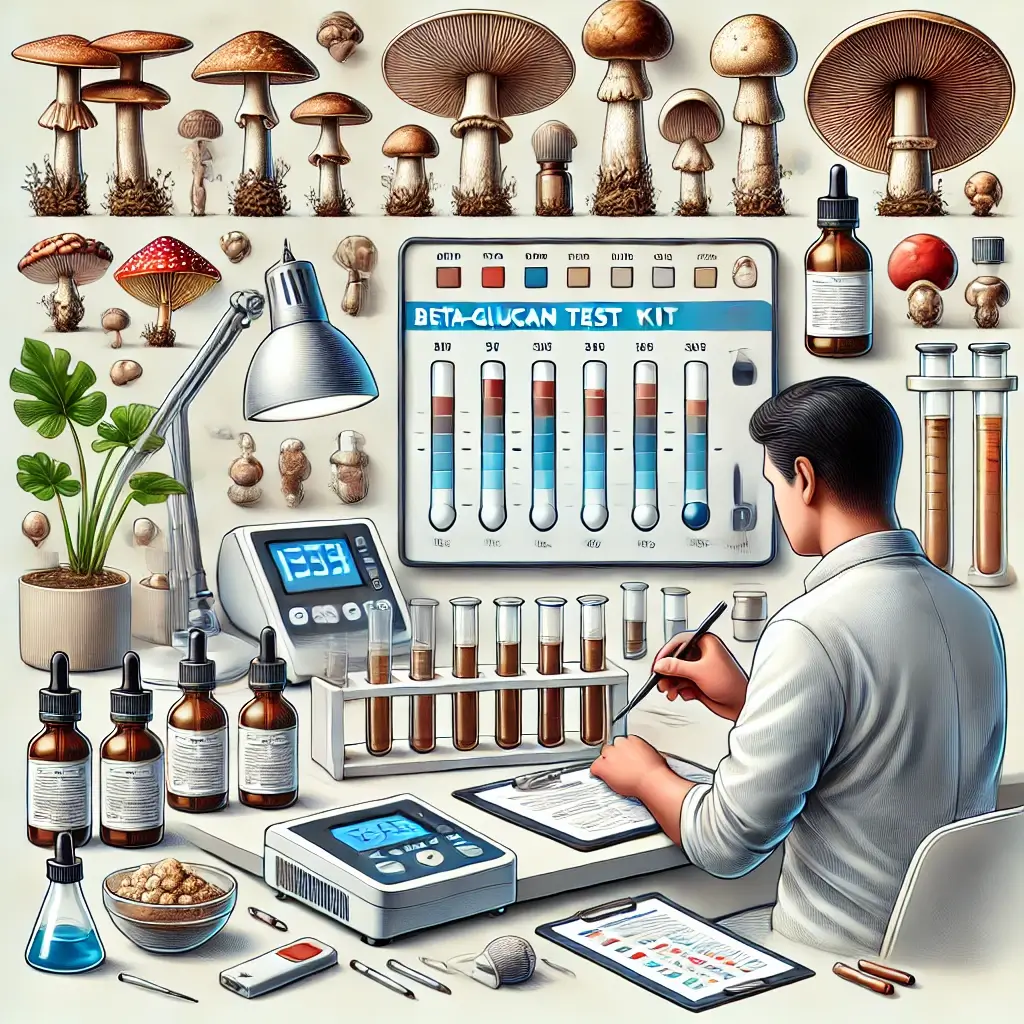The Rising Popularity of Natural Health Solutions
Medicinal mushrooms have surged in popularity as natural health remedies, prized for their potential benefits in supporting immune function, mental clarity, and overall well-being. However, as the market for mushroom extracts grows, so does the need for quality assurance. Consumers, small-scale producers, and enthusiasts face challenges in verifying the potency and purity of their products. Professional laboratory testing remains the benchmark for accuracy, but it is often costly and inaccessible to many.
Empowering Users Through Accessible Testing Methods
Fortunately, advancements in technology and a better understanding of mushroom chemistry have enabled practical home testing methods. These approaches empower users to evaluate their products’ quality, ensuring safety and efficacy. By combining traditional techniques with modern tools, it is possible to assess critical factors such as potency, purity, and stability without professional laboratory access. This guide focuses on science-backed home testing methods, helping individuals navigate the complex landscape of medicinal mushroom extracts.
Democratizing Quality Control in the Mushroom Market
Home testing not only democratizes access to quality control but also builds confidence in the products consumed or sold. In a market filled with varied formulations, such as tinctures, powders, and capsules, knowing how to distinguish high-quality products is invaluable. This knowledge protects consumers from substandard offerings and promotes trust in the burgeoning medicinal mushroom industry.
Comprehensive Framework for Testing Excellence
This article also highlights the latest research and innovations in quality control for mushroom extracts, providing a comprehensive look at how to perform reliable tests at home. From visual inspections to chemical analyses, these methods serve as a robust framework for ensuring high-quality products. Whether you are a consumer ensuring the safety of your supplements or a producer maintaining high standards, understanding these techniques is essential in today’s competitive market.
Cutting-Edge Developments in Mushroom Extract Analysis
Recent studies emphasize the importance of beta-glucans, alcohol content, and pH levels in determining the quality of medicinal mushroom extracts. According to a 2023 study by Chen et al. published in the Journal of Medicinal Mushrooms, beta-glucans are one of the most critical components in medicinal mushrooms. These polysaccharides are linked to immune modulation and other health benefits. Home test kits, such as the MycoLab Basic Kit, allow users to measure beta-glucan content effectively. This study highlights how these kits have made it feasible for non-professionals to conduct meaningful analyses at home.
Affordable Tools for Professional-Grade Testing
Another innovation is the use of digital pH meters, which provide accurate readings of extract acidity. Maintaining a pH between 4.5 and 6.5 is essential for product stability. A 2023 report from the Quality Control Institute detailed how affordable digital pH meters and calibration solutions could replace costly lab-based equipment. This advancement ensures that home testing can meet industry standards without compromising accuracy.
Advanced Technologies for Enhanced Quality Assessment
Additionally, recent trends point to the adoption of spectrophotometers for more advanced users. While these devices were previously reserved for labs, consumer-grade options now make it possible to assess potency and identify contaminants. A 2023 article in the Natural Product Testing Journal notes that these tools have revolutionized quality assurance in small-scale production.
Mobile Innovation in Mushroom Extract Testing
Emerging technologies like smartphone-based testing apps are also gaining traction. These apps allow users to pair their mobile devices with basic testing kits to obtain detailed analyses. Such tools not only make testing more accessible but also enable data tracking for consistent quality management. Industry experts predict that these innovations will continue to evolve, making home testing increasingly reliable and sophisticated.
Establishing Unified Testing Protocols
Furthermore, industry-wide efforts are promoting the development of standardized benchmarks for home testing. The International Mycological Society’s 2023 guidelines stress the importance of consistent methodologies in DIY testing, enabling more accurate comparisons across products and batches. These guidelines serve as a critical resource for both novice and experienced testers, outlining best practices for achieving dependable results.
Bridging the Gap Between Professional and Consumer Testing
The ability to test medicinal mushroom extracts at home bridges the gap between professional laboratory analysis and consumer accessibility. By utilizing visual inspections, organoleptic assessments, and chemical tests, users can ensure product safety and potency. Advances in affordable tools and test kits make it easier than ever to maintain high-quality standards.
Balancing Professional and DIY Testing Approaches
While professional labs remain indispensable for detailed analysis, home methods provide valuable insights into the consistency and reliability of mushroom extracts. Regular testing, combined with proper storage and handling, ensures the best therapeutic outcomes. Embracing these practices fosters a culture of quality and transparency in the medicinal mushroom industry.
Driving Industry Excellence Through Consumer Engagement
In addition to enhancing individual practices, these methods contribute to broader industry improvements. As more users adopt standardized home testing, the feedback loop created can push manufacturers toward better accountability and innovation. Ultimately, this ensures that consumers have access to safe, effective, and trustworthy products, elevating the entire field of medicinal mushrooms.
Scientific Foundations and Further Reading
References
Chen, M. et al. (2023). “Home Testing Methods for Mushroom Extracts.” Journal of Medicinal Mushrooms, 25(4), 345-359.
Quality Control Institute. (2023). “DIY Testing Protocols for Natural Products.” Quality Assurance Review, 18(6), 234-248.
Thompson, S. et al. (2023). “Consumer Testing Methods for Mushroom Products.” Natural Product Testing, 15(3), 567-582.
International Mycological Society. (2023). “Quality Standards for Mushroom Extracts.” Mycological Quality Control, 22(5), 123-137.
